What's the best way to structure your website?
Introduction
Information architecture (IA) informs how your content is organised, prioritised, labelled, and accessed. The larger and more complex your website, the more you need a solid IA. Think of it like organising a library. If you only have 10 books, you don’t really need much of a system. But if you’ve got 10,000 books, having no system is a navigational nightmare waiting to happen.
Why is getting information architecture right so important?
Information architecture provides the foundations of your website and determines if users can find the content they’re looking for. Frustrated users tend to bounce, so it’s a false economy to invest in great content when your IA is ineffective.
Much like foundations, IA isn’t the centre of attention, but if it’s wrong, you’ve got a big problem. We find IA can often be overlooked by teams keen to skip to exciting elements like visual design and content, but so many design decisions ultimately hang on the site’s structure, as set by the IA.
Topic-based information architectures
There are two common approaches to structuring a website’s information architecture: topic-based and audience-based. Topic-based IAs structure content around the key topics that users are there to access or learn about.
Returning to our library example. If you were taking a topic-based approach to organising your library, you might group the books by genres like sci fi, fantasy, history or horror.
Our website uses a topic-based IA. It puts content into distinct sections based on what the content does. What we do shows our services, Projects shows our work, and Insights shows our thinking.
Our site is simple, but topic based IAs can also work for large, complex organisations. The British Museum’s website has thousands of pages, but its topic-based IA presents users with a straightforward menu that surfaces the key areas users are likely to need.
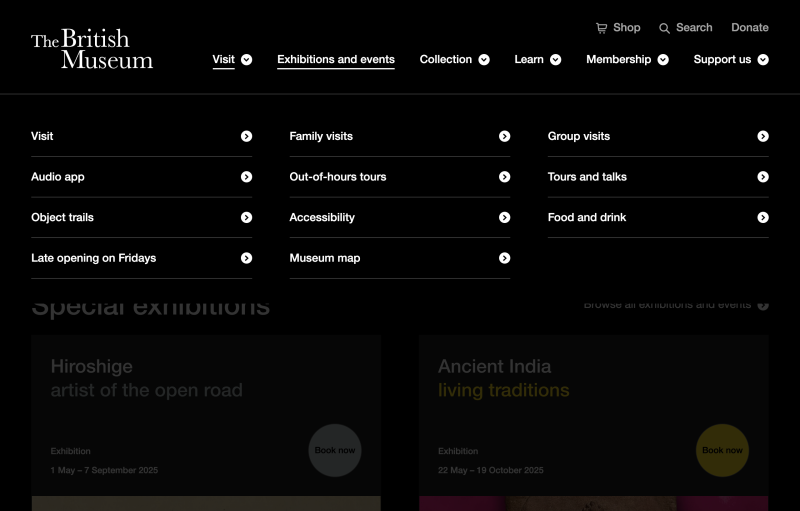
The IA is arranged around pertinent topics like visit, exhibitions, collections and membership. A topic-based IA is a great choice when your website has one solid user base coming to your site to perform a range of different tasks.
A museum is a great example of this. Users might want to find out about opening times, ticket prices, or what special exhibitions are on. They may wish to see items in the digital collection before or after their visit, and they might have enjoyed a visit so much that they’re interested in becoming a member.
Topic based IAs have a range of advantages. By grouping information into clear topics, it prevents there being any need to duplicate content (having it appear in two or more sections). They’re also great for SEO, as making the topics that are important to your audience a core part of your site’s navigation and URL structure shows to search engines crawling your site that you specialise in these topics. For several years, search engines have been moving towards ranking based on a site’s topic clusters rather than keyword density and backlink profiles, making topic based IAs a more effective choice to rank for the organic search terms that matter to you.
For these reasons, topic based IAs should be considered the ‘default’ best choice.
Audience based information architecture
On the other hand, audience-based or user-led IAs structure the website around user groups, rather than by topic. If we go back to our library, this would be grouping books by who they were for, such as ‘books for under 7s’, or ‘books for parents’. This has its strengths and weaknesses, but it’s ideal when your site serves a range of distinct user groups who are there to do different things.
Anthony Nolan’s IA is a great example of this. Users go to Anthony Nolan’s website for two key reasons: they are either looking to do good, via donating or fundraising, or experiencing a stem-cell related illness that they need support with. Their IA reflects this, splitting their content into ‘Help save a life’ and ‘For patients and families’. The latter makes the user-focus very obvious, but user-led IAs don’t have to be this explicit.
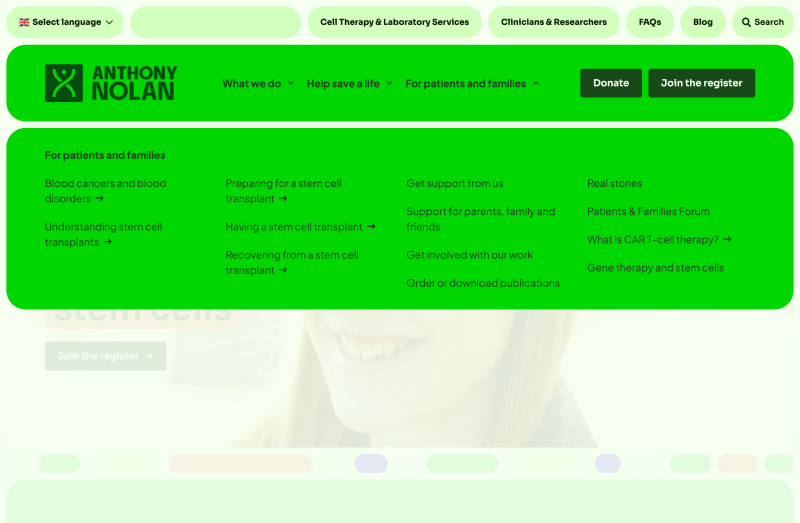
University websites need to serve a range of user groups with non-overlapping needs, such as prospective students, existing students, staff, alumni, researchers and so in.
The top-level navigation of the University of Sheffield’s IA sorts content into sections to serve distinct user groups. Study is for prospective students interested in studying at the university. Research is there to serve academic researchers and Collaborate is for people who want to get involved as a potential industry partner, philanthropist, school or alumni.
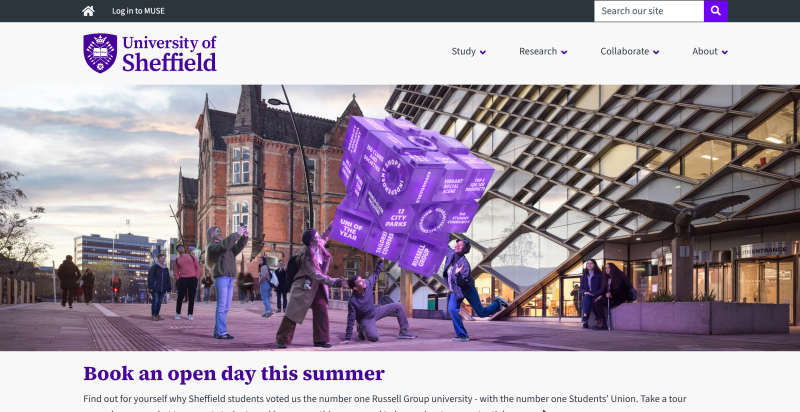
The names of the sections don’t have to directly reflect the different audiences. These sections could be called ‘Applicants, Researchers, Industry’ but naming them after what the user wants to achieve is a stronger approach.
However, audience-based approaches can run into issues when a site makes too many assumptions about how distinct their user groups’ needs are. This can lead to having to duplicate content into both sections, because you realise that two different sets of users sometimes need to access the same content.
A great example of this issue is the old design (since updated) of the Electoral Commission’s website.
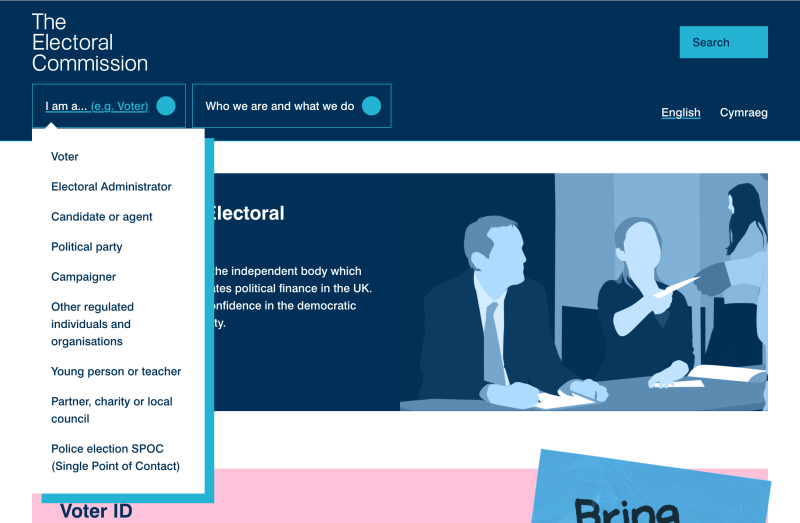
Their audience-based IA sectioned content by their different audiences (all nine of them), funnelling them to advice specific to that user group. This created issues when users fell into multiple groups: a campaigner may also be a candidate, a teacher can also be a voter. To prevent them missing key info, content needed to appear in every relevant user space, creating either duplicate content (with negative SEO impacts) or confusing breadcrumb structures.
If you’re opting for an audience-based IA, you need to be very confident your user groups are distinct. It’s easy to make assumptions about users that divide them into neat boxes, but we find that in the real-world these distinctions are rarely so clear cut. We recommend conducting a programme of in-depth user-research to firmly establish your audience’s needs and whether the needs of different groups meaningfully over-lap.
Hybrid approaches
Sometimes websites take a hybrid approach to their IA, in part structuring them around topics, and in part around user groups.
In the example below from Leeds Mind, the IA is mostly structured around topics like services and getting involved but also includes a section on ‘Help for Employers’ which is based around their needs as a distinct audience.
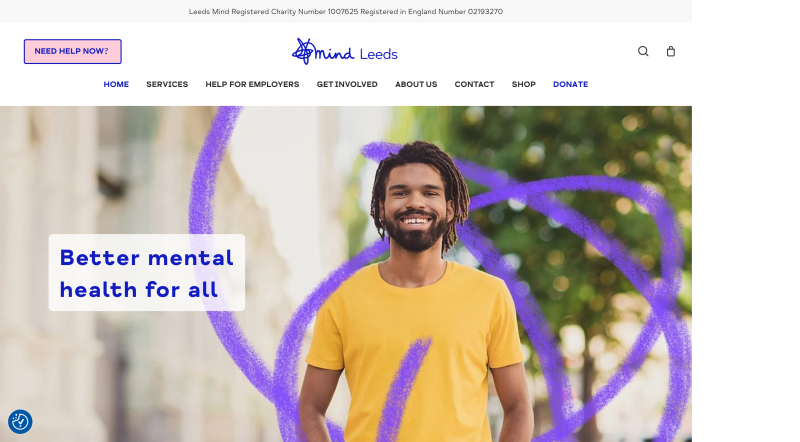
Sometimes a hybrid IA is the right approach, but we find that usually it’s a sign that new sections have been bolted on to the website over time, and this becomes confusing for the users. The risks of having to duplicate content quickly multiply with a hybrid IA, so we find it’s usually best to re-think and try to standardise around a single approach.
Choosing the right architecture
Choosing how you structure your information architecture is a big decision that will affect every aspect of your website. The best way to get it right by conducting user research so you can be confident you understand who your users are, what they need, and how distinct these needs are.
Use surveys and user interviews to establish who your users are, and UX tools like Hotjar to assess what they do. Use this data and insight to inform your IA and then verify it really does serve user needs by testing it rigorously.
We use TreeJack by Optimal Workshop to test all our IAs with real users. We set tasks based on key user journeys and ask participants to decide where they think they should go, based on page titles within the tree diagram. This allows us to see if users find the content they need and establish if there are any issues that confuse users so we can address them straight away. This saves time by fixing these issues before work has been done on design and build, which is far more expensive to re-do.
If you’d like our team to examine your site and analytics to design a more effective information architecture that makes your site more navigable and effective, we’d love to talk.